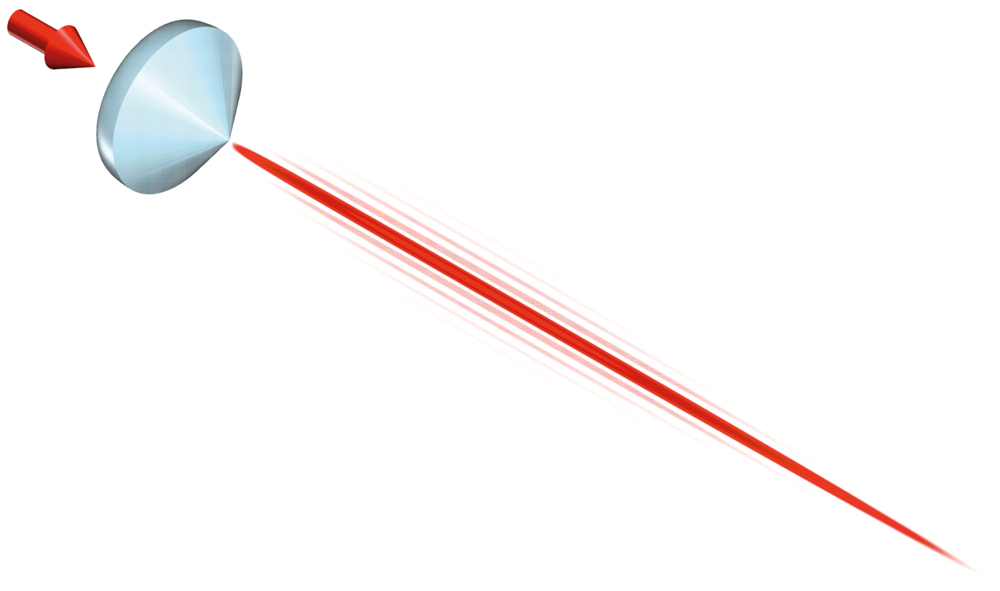| Issue |
Photoniques
Number 132, 2025
|
|
|---|---|---|
| Page(s) | 51 - 56 | |
| Section | Comprendre | |
| DOI | https://doi.org/10.1051/photon/202413251 | |
| Published online | 01 July 2025 | |
Les faisceaux non-diffractants
Aix-Marseille Univ., Laboratoire LP3, CNRS UMR 7341, 163 Av. Luminy, 13009 Marseille, France
La diffraction constitue une limite fondamentale de l’optique, qui lie champ proche et champ lointain par une transformée de Fourier. Un faisceau ne peut donc pas conserver sa dimension transverse lorsqu’il se propage. Les faisceaux dits « non-diffractants » présentent néanmoins cette étrange caractéristique. Ils sont même capables de se « reconstruire » après avoir rencontré un obstacle. Quelles sont les raisons qui rendent cela possible ?
© The authors, published by EDP Sciences, 2025
 This is an Open Access article distributed under the terms of the Creative Commons Attribution License (https://creativecommons.org/licenses/by/4.0), which permits unrestricted use, distribution, and reproduction in any medium, provided the original work is properly cited.
This is an Open Access article distributed under the terms of the Creative Commons Attribution License (https://creativecommons.org/licenses/by/4.0), which permits unrestricted use, distribution, and reproduction in any medium, provided the original work is properly cited.
Current usage metrics show cumulative count of Article Views (full-text article views including HTML views, PDF and ePub downloads, according to the available data) and Abstracts Views on Vision4Press platform.
Data correspond to usage on the plateform after 2015. The current usage metrics is available 48-96 hours after online publication and is updated daily on week days.
Initial download of the metrics may take a while.





